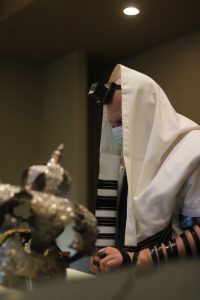Perspectives on Tefillah
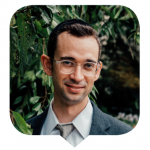 Davening Behind the Shul
Davening Behind the Shul
By Ya’akov Trump
Since the pandemic began, davening has been a new experience for all of us. We have had to acclimate to new venues and new approaches to tefillah.
I have now had the privilege of davening Minchah in the magical light of the almost-setting sun. I’ve welcomed the chilly breeze during the early Morning Berachos and coped through the humidity of the midday Mussaf. I watched the seasons of the trees and felt the bite of the mosquitoes—all through my tefillos. Standing there davening from behind my mask, I had the privacy and time to contemplate this new, temporary reality.
One of the striking lessons I learned arose from the following gemara—I came across it while preparing to deliver my first Shabbos shiur once we were back in shul after months of distance Zooming.
The Talmud states, “Rav Huna said: ‘Anyone who prays behind the sanctuary is called an evil person’” (Berachos 6b). I admit that the first time I read this gemara, it made me feel very uncomfortable. Here we were davening in the shul parking lot in a tent right behind the shul, and then learning about the very thing we were doing.
The shiur I was giving that Shabbos afternoon focused on the work Ein Ayah by Rav Avraham Yitzchak HaCohen Kook, zt”l. Though he wrote the following idea in the 1890s in the Lithuanian shtetl of Zeimel, his words comforted me in 2020. Sitting in the shul tent, I learned two important messages hidden in this gemara.
The ideas of “shul” or “behind the shul” do not refer to physical locations. The concept of “shul” in this context represents the concept of community. The Gemara is criticizing an individual who decides to exit from the community and pray “behind” (separately). Even in adverse or solitary situations, one needs to be part of the larger community. Conversely, there can be those who may technically be in a physical shul structure but have no interest or investment in the greater good or in the klal. Rav Kook explains that the Gemara is teaching us a fundamental point: in order for our prayers to be accepted, we need to be connected to something larger than ourselves—we must be connected to the klal. True, during times such as these, it may not feel like we are physically connected with our minyanim, especially with the slow, incremental return to our sanctuaries. But Rav Kook takes a more expansive view of the “shul,” seeing it as something that transcends the brick and mortar. This idea speaks to the many who, while still not back inside the shul, continue to feel connected to the community.
Yet this idea also challenges us. During this Covid period, there are different groups of individuals who are not in shul. There are those who have found different options for davening out of a genuine concern for health and a legitimate fear of joining large gatherings. There are also those who have found more fast-paced and convenient settings for tefillah. Both groups do not currently daven in their usual shul, but those in the first group wish they could be back in shul but have no choice under the circumstances, while those in the latter seem quite content with their new arrangement. This gemara challenges us to ask ourselves an important question: to which group do we belong? Are we a community united despite the physical distance or are we “behind-the-shul” folks?
Rav Kook proceeds to elaborate, in an even more profound way, on the Gemara’s use of the terms “shul” and “behind the shul.” He explains that there are two ways our prayer can operate.
Firstly, prayer serves as a conduit for requests. We use it as we turn to the Almighty and beg for our many needs.
Secondly, prayer is a vehicle for self-reflection and growth, forcing us to examine our actions and aspirations. As we pray, we recognize that it is through our actions that we represent, and ultimately earn, the things we request from Hakadosh Baruch Hu.
Rav Kook takes a more expansive view of the “shul,” seeing it as something that transcends the brick and mortar.
Rabbi Samson Raphael Hirsch notes that the root of “lehispalel,” the Hebrew word for prayer, is pei, lamed, lamed, which means “to judge.” The way this verb is conjugated in Hebrew makes it reflexive: lehispalel means to judge oneself. Every time one prays, one must question: Do I deserve the raise I am asking for? Have I appreciated the gifts I have received? Do I really value the things I am asking for—such as the rebuilding of Yerushalayim and the ingathering of Exiles? These are some of the tough questions one must ask oneself when engaging in prayer, with the goal being meta-awareness and spiritual growth.
Indeed, this latter idea is the primary goal of tefillah. Only when we are willing to change ourselves, do we deserve what it is we are asking for.
Metaphorically, according to Rav Kook’s explanation, prayer as a tool of self-improvement is referred to as “shul,” and prayer as a medium to submit our requests is called “behind the shul.” Thus, the Gemara says that if our prayer is only “behind the shul”—that is, if our prayer is only about asking for what we need and not about what we owe the Almighty—then our prayer is deficient. Prayer is only effective if we remember that it must be a catalyst for self-change and improvement.
This more profound explanation is powerfully contemporary as well. Our return to shul is still very much incomplete; the elderly, the medically frail and so many others are absent, and the socializing, the kiddushim, the camaraderie and the shiurim are still sorely lacking. But with so much missing, we are forced to remember what tefillah is truly supposed to be about: being part of the larger transcendent community, as well as being the vehicle for personal growth and change. As we sit in our socially distant seats in shul wearing a mask that grants us privacy and obscures our facial expressions, we have the opportunity to meet ourselves in a private, personal fashion and to ask some important questions. May we grow from and through this experience and truly emerge as “shul” people in every sense of the word.
Rabbi Ya’akov Trump is rav of the Young Israel of Lawrence-Cedarhurst in New York.
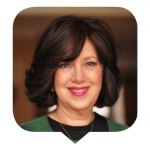 Va’ani Tefillah: Bringing the Self to Tefillah
Va’ani Tefillah: Bringing the Self to Tefillah
By Debbie Greenblatt
In the early days of the pandemic, the question loomed: If corona ended tomorrow (and we mostly thought it would—“surely they’ll figure this out!”), would anything really change? But after weeks turned into months with no end in sight, we realized that, in fact, something has changed. And like all change, its trajectory was unpredictable.
Since the destruction of our Temple, the synagogue has been the center of our communal existence. As the pandemic intensified, shuls stood vacant. It looked so wrong. Our mikdash me’at had become hamikdash she’sha’sak (the sanctuary that became silent).
For those women who go to shul on Shabbos, the shift to praying exclusively at home was not such a dramatic change. Surely we missed hearing Kerias HaTorah and answering Kaddish (and, of course, seeing our shul friends), but our tefillos continued.
For many men, however, the change was more drastic, as they were displaced from their makom kavua (regular place of prayer). Those who were serious about tefillah carried on, despite finding the situation disconcerting. And then something unexpected happened: many men started to really enjoy davening at home, to the point that when shuls began to tentatively reopen, quite a few serious daveners did not return immediately, wanting to hold on to the more spiritually satisfying experience of davening at home.
What was going on?
Shul serves many functions in addition to serving as a makom tefillah. It is social, informational and epicurean. The non-tefillah roles fulfilled by the shul relate to the current culture of Judaism, a sort of bagels and lox on steroids. Along this cultural journey, we may have lost our way, becoming more deeply immersed in this culture while allowing the core of our Judaism—the relationship of a Jewish individual to his Creator—to be sidetracked.
The phenomenon of coming to shul JFK (“Just For Kiddush”) arose, with rabbis tolerating it because “well, at least they’re in shul.” Even where such a phenomenon does not exist, there is so much “hock” (shul news): What’s going on with so-and-so? Is his business still in trouble? The rabbi’s main supporter hasn’t been in shul for three weeks, did they have a falling out?
Covid-19 facilitated a cheshbon hanefesh, a soulful reassessment.
When davening at home, all of that fell away. Likewise, the ego challenges to one’s kavod that shul sometimes presents—Who davened for the amud? Who got the aliyah?—disappeared. The static was silenced, and each davener was left with his siddur and his thoughts.
This highlights an ongoing tension. While the communal institutions of Judaism are integral and necessary, they cannot take the place of each individual’s avodah, which is uniquely private and personal. In that quiet time while davening at home (even with kids around), many of us realized that tefillah could be something in which we truly engaged. Our own pace, our own songs, our own devotion.
Jewish lore is filled with parables of a king sending his son out of the palace to wander as an unknown. The king does so generally because there is something the young prince needs to learn on his own, but as soon as he does, nothing makes the king happier than bringing his son back home to the palace. The King of Kings sent us out of shul, but perhaps not to wander. Maybe He sent us to our homes so we could find our spiritual centeredness and mend our connection to Him without the distractions that often accompany prayer in the synagogue. In the words of a serious ben Torah, reflecting on why he was not eager to return to davening in shul after a two-month Covid hiatus: “Maybe I was busy running to davening [prior to Covid], but I was not truly davening.”
Perhaps in our tefillah, the thread of connection had frayed. Covid has propelled us to re-examine that connection. In the I-generation, we need to also have I-tefillah, the bringing of the self to tefillah. Yet in the world we live in, it is ever harder to be in touch with the real I, the self that is really you, the deepest self where all the external definitions of a person don’t apply. All we bring to any relationship is that inner self. Tefillah is the time we get in touch with Hakadosh Baruch Hu; it’s when we are investing in our relationship with our Father. Hashem is always there, like the constant rays of the sun, yearning for a connection with His children. We sometimes inadvertently draw the curtain across the window, blocking the light, and lose the sense of His presence, forgetting what it feels like to have that real relationship with Him. The curtain may be drawn due to the indifference that invariably develops when one takes a relationship for granted; the apathy that ensues after a significant period of having only superficial interactions; or the inevitable shallowness of a relationship when all one brings to it is one’s wittiness or tennis skills, but never the real self.
In that quiet time while davening at home (even with kids around), many of us realized that tefillah could be something in which we truly engaged. Our own pace, our own songs, our own devotion.
A kinah we recite on Tishah B’Av presents a litany of woes that have befallen our people, and the refrain is, “Eich enachem— How will I be comforted?” The troubles befell us collectively, but the question posed is, how will I be comforted? The root of enachem means to change direction, to change perspective, as when the Torah states: “pen yinachem ha’am—perhaps the people will reconsider” (Shemos 13:17). Maybe Hashem wasn’t sending us out of shul as much as He was sending us back into our homes, our batim. Maybe He was asking us to consider eich enachem, how will I change the direction of my davening?
When Hashem commanded Moshe regarding the building of the Ark of the Covenant that was to be placed in the Holy of Holies, He said, “And you shall overlay it with pure gold; from inside (mi’bayis) and from outside you shall overlay it.” We see from this verse that bayis connotes “inside.” Commenting on this verse, the Kli Yakar explains that Hashem wanted the pure gold of the Ark to be on the inside. This is symbolic of what Hashem wants from us—He wants our inside, our penim, our heart, our deepest purest self. Perhaps that is what we felt when we were davening at home. It behooves us to internalize the words, attributed to Rabbi Elazar Azcari in Sefer Chareidim: “Bilvavi Mishkan evneh, I will build a sanctuary in my heart, ki Rachmana liba ba’i, because the Merciful One desires the heart.”
The synagogue is essential to Jewish life and to service of Hashem. It is a halachic imperative. Elaborating on this imperative, the Shulchan Aruch states that one should try and pray in a synagogue even if he could pray with a minyan in his home, and that one who lives in a place where there is a shul and doesn’t enter it is called a “bad neighbor.” The Maharal states in Gur Aryeh that as long as there are houses of prayer and houses of Torah study, the Divine Presence is with us.
So how should we not lose that which many of us have gained spiritually during this era of praying at home? Is there a way to transpose the more meaningful prayer that many experienced at home back to shul? I don’t know the answer, but I have a sense that it’s time to have the conversation.
Debbie Greenblatt is a senior lecturer for the Gateways organization and a teacher for over thirty years of both observant and not-yet-observant Jewish women. Debbie’s lecture topics include Jewish texts, Jewish thought and relationships.
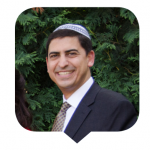 Tefillah from the “Days of Old”
Tefillah from the “Days of Old”
By Zvi Engel
They say the greatness of Montreal Canadiens hockey player Maurice “Rocket” Richard was his uncanny ability to skate at breakneck speed while holding in his mind’s eye a full awareness of what all the other players were doing at the same time. It was as if he was both on the ice and in the stands watching the players from above—in the action and observing it at the same time. In a strange way, Covid-19 enabled us to do something similar with regard to tefillah. The pause on tefillah b’tzibbur in many shuls forced us all to step back and ask: What is working here? What is broken? What is it about tefillah b’yechidut at home that resonates, and why did Chazal ordain tefillah b’tzibbur in the beit knesset or beit midrash as the optimal form of tefillah?
Indeed, for all the loss, alienation, chaos and pervasive uncertainty, some members of my shul reported that the crisis enabled them to rethink their priorities, including their relationship to Hakadosh Baruch Hu as expressed through tefillah. Covid-19 facilitated a cheshbon hanefesh, a soulful reassessment during this time-out from communal Jewish life.
The coda to Megillat Eichah expresses our pining for a future infused with an idyllic past: “Chadesh yameinu k’kedem—Renew our days as of old.” The Megillah is referring to the arrival of Mashiach, but until the ultimate fulfillment of that vision, to what “days of old” do we seek to return today? In other words, when envisioning tefillah after Covid, do we want things to be exactly like they were k’kedem, pre-Covid, or can they perhaps be even better, based upon the lessons we’ve learned during these trying times? Can we return to normal shul life, as it was in pre-Covid days, but with a renewed sense of purpose and spiritual energy? These questions apply to us as individuals and collectively in the communal centers where we gather together to meet Hashem. I believe the questions are less about discovering novel ways of engaging in tefillah as they are about rediscovering core elements of tefillah, elements we can recapture from “the days of old.”
Giving Up Our False Sense of Control
While minyanim were on hold, two salient features of tefillah came to the foreground for me personally. While both of these will inevitably recede as we emerge from the pandemic, perhaps they can serve to inform us in the future.
First was a renewed awareness of our utter dependency on the Ribbono Shel Olam. As the fragility of the world order was rapidly exposed, a dull, amorphous feeling took hold; the world teetered on the edge of some kind of abyss. (In Chicago, weeks of slate-gray skies, cold rain falling in sheets, and even a freak hailstorm on erev Pesach did not help.)
While you can potentially have more kavanah while davening on your own, there is nothing as powerful as communal prayer.
In 2011, when mori v’rabi Rav Aharon Lichtenstein, zt”l, was asked about the diminished state of feeling dependent on Hakadosh Baruch Hu in the modern era, he acknowledged the many quills broken in attempting to capture the relatively newfound feeling of control over one’s surroundings, as compared to the feelings of insecurity that permeated much of premodern life. Reading one of the vivid descriptions of human vulnerability and finitude in Megillat Kohelet, he asked pointedly, “Let us ask ourselves honestly: does a person today feel ‘like a fish trapped in a net’? Or does he feel that he generally controls his own life?” After citing the former realities of high infant mortality rates and low life expectancy, he turned to the devastation wrought by plagues throughout the Middle Ages. “The situation,” he said, “was one in which a person could indeed feel the sharp sword literally resting on his neck . . . the lack of certainty was awesome and dreadful.”1 In the early days of the pandemic, if only for a limited time, some of that sense of palpable danger, of the precariousness of our entire global infrastructure, returned me back k’kedem, to those days of old. While I do not hanker for a life of fear and terror, how about integrating this feeling of clinging to Hashem into life after Covid? Our tefillot seek to remind us of this daily: “Malchut’cha malchut kol olamim—Your dominion extends to all worlds,” from the expanses of the universe to the mind-boggling intricacies of the microscopic plane, in all dimensions, physical and spiritual; “Pote’ach et Yadecha umasbia lechol chai ratzon—You open Your hand, sustaining the life and existence of everything”; “Ahallelah Hashem b’chayai—I will praise Hashem all my life,” expressing thanksgiving for life itself and reminding ourselves daily not to take anything for granted.
Tefillah That Transcends Time
Due to the frenzied pace of our lives, especially our pre-Covid lives, it sometimes felt to me as if shul was becoming reduced to a sort of religious train station where everything is governed by schedules and the goal is to arrive at the destination as expeditiously and painlessly as possible. As the flywheel of efficiency takes over, spinning faster and faster with every passing minyan, it becomes a metric for an activity whose true goal is to remind us of the constant presence of Hashem in our lives. When Chazal describe avodah she’balev, service of the heart, they mean that it ought to be sincere, emotional and engaged. Its rhythm must not be set by the ticking clock but by the beating heart. “How can we arrive (finish) faster?” “How can we improve our ‘words per minute’ rate?” “Are there any shortcuts or parts we can skip?” This is the language of transportation. It aims to palliate the pain of travel, to minimize boredom. But streamlining tefillah risks breeding spiritual automatons. Rather than invoking the language of transportation, tefillah should inspire the language of emunah and bitachon.
Like everyone else, I was suddenly confronted with a new, shul-less life.
And this is the second aspect of tefillah that changed for me once minyan was no longer my day-to-day reality: davening on my own each day transpired beyond time. Instead of a clock, the duration and pace of my tefillot were guided only by the words in the siddur. Speaking to the Ribbono Shel Olam, poring over the words formulated and compiled by Chazal, became a deeply personal and private experience. I imagined the Avot and Imahot, the architects of the embryonic, unstructured form of prayer—alone in the world as ma’aminim and unable to find a minyan anywhere—speaking to Hakadosh Baruch Hu. Whether or not the word daven is a cognate of the Aramaic word “d’avuhon—of the forefathers,” the earliest and ultimately the most enduring models for tefillah remain the Patriarchs. This is how we introduce ourselves at the beginning of the Amidah: I am here because my forefathers stood before You. Avraham Avinu designated a place for tefillah.2 Each of the Avot set a time in which to encounter Hashem daily.3 But a clock did not govern the duration of their dialogue with Hashem. This, too, is an aspect of “k’kedem.” While the wish of Rabbi Yochanan, “Would that a person prayed all day long,” is impractical, the aspiration still leaves its mark.4
Even as we may yearn for the spontaneity and unstructured nature of our forefather’s prayers, we must not undermine the development and evolution of prayer that links our tefillah to all previous generations. The bridge joining us to our Avot is built out of the sacred words of Dovid Hamelech, “minted in the forge of” (Berachot 33a) the Anshei Knesset Hagedolah, codified in the courts of Chazal, and sanctified by all generations since.
The Role of the Beit Knesset
The question of reimagining tefillah after Covid might center on first asking how we can retain a greater sense of dependency upon our Creator, and, second, how we can integrate a heightened reverence for, and a deepened personal relationship with Hashem in the future. On a communal level, it remains vital that we retain the pivotal role of the beit knesset.
Our batei knessiot stand today as our mikdashei me’at, miniature Temples.5 We dare not abandon them. Though Avraham and Yitzchak envisioned the Har Habayit (the Temple Mount) as a “peak” (Bereishit 22:14) and a “plain” (Bereishit 24:63) respectively—natural, aboriginal, untamed and organic—the Gemara in Pesachim declares that when the Beit Hamikdash is rebuilt, nations of the world will ascend to Yerushalayim seeking “the House of the God of Yaakov.” In contrast to the pastoral visions of Avraham and Yitzchak,6 Yaakov Avinu sees the Har Habayit as a physical building, built by human endeavor, a portal of encounter with the Ribbono Shel Olam involving fixity of structure, arrangement of tefillot, and set times for prayer. Whatever may be lost in spontaneity is gained in grounded permanence. Yet the construct of an actual structure, the Beit Hamikdash, need not supplant the earlier, pastoral, unscripted prayers of Avraham and Yitzchak; rather, these elements should be incorporated. After all, Yaakov Avinu is the offspring of the previous generations of Avot and Imahot, embodying all that he learned from them, and incorporating their teachings into the House of Hashem.
In reimagining tefillah now, perhaps this is our challenge: how to integrate the lessons of Covid-19—our utter dependency on Hashem and our capacity for encountering Hashem on a personal level—into our avodah, keeping faith with the legacy of our forebears.
Notes
1. Rabbi Haim Sabato, Mevakshei Panekha: Sichot im HaRav Aharon Lichtenstein (Heb.) (Tel Aviv, Israel, 2011), 98-100 (translations mine).
2. Berachot 6b, and see Ha’amek.Davar to Bereishit 13:14.
3. Berachot 26b.
4. Berachot 21a.
5. Megillah 29a.
6. Pesachim 88a.
Rabbi Zvi Engel serves as the rabbi of Congregation Or Torah in Skokie, Illinois.
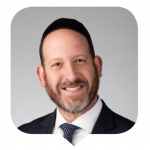 Setting Realistic Goals for Tefillah
Setting Realistic Goals for Tefillah
By Shmuel Silber
Ask a Jew what he does in a time of distress, and he will tell you, “I raise my hands and voice to my God and ask for salvation.” Ask a Jew what she does in times of success and joy, and she will respond, “I cry out in thanksgiving to the One Above. At times, it may be through formal, organized prayer, and at times through spontaneous, unscripted prayer.
One of the most powerful prayer experiences I have ever had took place a few short years ago. I was spending a few weeks in Israel with my family, and we decided to take a trip to Shiloh, the ancient site of the mishkan (Tabernacle). After touring, we sat down in a shaded area next to the archeological site, and a beautiful image of Tefillas Chana. It was in this very place, thousands of years ago, that a heartbroken woman came to pray for a child. She made her way into the mishkan, and all the pain that had built up over the years came pouring out of her. Herein lies the beauty of tefillah—the intensity, the emotion, the pain, yet at the same time, a belief that all could change if the Master of the Universe wills it so.
Tefillah is our personal opportunity to talk things out with God. Tefillah provides us with the platform to ask even if the answers will never come. But at those moments of sadness and despair, moments which should distance me from my beloved Father, tefillah brings me back. Do not go, the Ribbono Shel Olam whispers into the recesses of my heart. I know you are hurt; I know you will never understand, but our relationship is so much greater than any one disappointment or challenge. Our relationship is what will give you the strength to get up and continue forward. When Chana entered into the mishkan that day, she was filled with the pain of years of unanswered prayers, yet confident that God would hear her and maybe this time give the great gift of a child. Chana understood that tefillah is the bond which holds us close to God and holds Him close to us.
To stand in a spot where such an intense dialogue had taken place moved me in a dramatic way. I walked towards the end of the mishkan area, the spot where the Kodesh HaKodashim (Holy of Holies) would have been, and I began to cry. I felt connected to my Father like I had never felt before. It was then that I finally understood what the essence of tefillah truly is—to speak to God. Real tefillah is an opportunity to talk to God and tell Him what pains me.
But it is not all about pain. Tefillah offers us the opportunity to speak to God about our successes and insecurities. Prayer offers us the ability to just bear our hearts. We have the opportunity to tell Him about our pain and joy. We are often taught that kavanah is the most important part of tefillah. While this is unequivocally true, we must expand the definition. Kavanah is understanding what you are saying, but it is also utilizing the prayer experience for what it is meant for, to come closer to God and closer to myself. Such is the power of tefillah.
Achieving a Meaningful Prayer Experience
Rabbi Tzadok HaKohen of Lublin provides an incredible insight on achieving a meaningful prayer experience. He quotes the gemara in Berachos 3a (Tzidkas Hatzaddik 31):
Rabbi Yosi said: I was once walking along the road when I entered the ruins of Jerusalem in order to pray. I noticed that Eliyahu, of blessed memory, came and guarded the entrance for me and waited at the entrance until I finished my prayer. When I finished praying and exited the ruin, Eliyahu said to me, “Greetings to you, my rabbi.” I answered him, “Greetings to you, my rabbi, my teacher.” Eliyahu said to me, “My son, why did you enter this ruin?” I said to him, “In order to pray.” Eliyahu said: “You should have prayed on the road.” I said: “I was afraid that I might be interrupted by travelers and would be unable to focus.” Eliyahu said, “You should have recited the abbreviated prayer instituted for just such circumstances.”
Rabbi Tzadok understands from here that Eliyahu was teaching Rabbi Yosi a fundamental principle of prayer: “Tov me’at b’kavanah mei’harbeh shelo b’kavanah—It is far better to have a small amount of prayer with concentration than a large amount without.”
Truthfully, I often find it difficult to maintain proper concentration throughout davening, but if I focus on certain sections or recite parts of davening at a slower pace, I sacrifice quantity but gain quality. While I certainly aspire to daven the entirety of tefillah with focus, I have to start with small, more realistic goals. So I commit to reciting Ashrei with kavanah, I then progress to reciting the first berachah of Shemoneh Esrei with concentration and work to increase the scope and breadth of my kavanah over time.
But there is another profound idea embedded in Rabbi Tzadok’s explanation. Rabbi Yosi went into the ruins because he did not want to be disturbed, as there were people on the main road. At times it may be easier to have more concentration praying alone. Many of us discovered this during the initial months of the pandemic when all the shuls and batei midrash were closed. Accustomed to davening with a minyan, some of us felt conflicted in the beginning. But then something amazing occurred: Praying at home led many of us to experience some of the most meaningful tefillos we have had in years. We davened in our dining rooms, patios and backyards. We sang Kabbalas Shabbos with our families. We felt uplifted by our prayers in a way we hadn’t felt before.
Some months later, we were granted permission to reopen our shuls and batei midrash. (Unfortunately, as I write this in early October, some shuls have recently been shut down once again.) We had to remind ourselves of an important fact: While you can potentially have more kavanah while davening on your own, there is nothing as powerful as communal prayer. True, when you daven on your own or with a smaller group, you can choose the pace. But when you daven with the tzibbur (congregation), you become part of something bigger than yourself. You may be interrupted, you may not enjoy the niggunim, but when you daven with your shul—the people in your community—you stand on their shoulders and they, in turn, can stand on yours. Eliyahu was telling Rabbi Yosi: Although your prayer may seem to be more effective when you daven alone, it is preferable to daven less but be part of the collective.
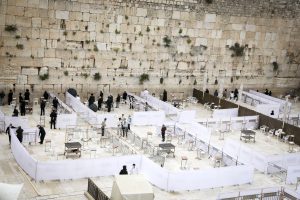
Dividers in the Kotel Plaza separate different minyanim to promote social distancing. Photo: Flash90/Olivier Fitoussi
I often need to remind myself of this important lesson whenever I have the privilege of davening at the Kotel, particularly on Friday nights. My family and I have spent quite a few summers in Israel; on Friday nights, the Kotel Plaza tends to be packed with tour groups, Birthright participants, soldiers, and, it seems, every other resident of Yerushalayim. Inevitably someone steps on my foot or inadvertently pushes me as I’m trying to daven Minchah. As I recite Lecha Dodi with one minyan, a nearby minyan sings loudly, and I find myself struggling to concentrate. One of my children usually asks, “Wouldn’t we have more kavanah if we davened in a shul? Let us daven Kabbalas Shabbos in one of the many beautiful shuls in Yerushalayim.” I always give the same answer: “There is no more beautiful tefillah than one you daven with your people.” A most powerful and meaningful prayer experience can be created when we attach ourselves to a tzibbur, even though we may feel we are sacrificing the benefits of private prayer.
Preparing for Prayer
The Ba’al Shem Tov is quoted as saying (Ba’al Shem Tov Hashalem 193), “A warm drink before prayer cleanses and purifies one’s thoughts.” The story is told that a chassid once came before Rabbi Yisroel of Ruzhin and explained that he had taken upon himself a more austere lifestyle, depriving himself of unnecessary pleasures. He told the Ruzhiner that he, for example, had stopped drinking coffee before davening. Quoting the above-mentioned statement of the Ba’al Shem Tov, the Ruzhiner told the chassid that if he chose to do away with extraneous pleasure, that was his prerogative, but a warm drink before davening cleanses and purifies one’s thoughts.
What was the Ba’al Shem Tov trying to teach us? That davening must be a pleasant experience. The Gemara in Berachos explains that the “chassidim harishonim,” the early pious ones, used to meditate for an hour before davening to prepare themselves for a meaningful prayer experience. Preparation is a necessary component for any meaningful experience. For davening, that can mean giving oneself enough time to arrive in shul with time to spare. It can mean finding a way to have a few moments of quiet before davening begins in order to clear one’s mind. To the Ba’al Shem Tov, the “warm drink” symbolizes the need to create a more serene and enjoyable tefillah experience.
Rabbi Yaakov Yosef of Polnoye, in his work Sefer Toldos Yaakov Yosef, explains that just as sacrificial offerings can be invalidated through certain inappropriate thoughts, prayer—which was instituted in lieu of the offerings—can also be invalidated by impure thoughts. Meaningful prayer requires proper intent, and if one does not have the proper kavanos, the tefillah can be rendered invalid. He goes on to explain that these “invalidated prayers” reside in this world and in one’s heart; they cannot ascend due to their imperfections. But the moment one is able to muster up the necessary kavanah, all the incomplete tefillos ascend along with the complete tefillah. All it takes is one meaningful moment of prayer to redeem many defective and imperfect ones.
The Toldos Yaakov Yosef provides us with hope in the face of what often feels like an insurmountable challenge. We often feel discouraged: how can we possibly muster the requisite kavanah each and every day for every single tefillah? While every prayer has some type of effect on who we are—the act of dialoguing with God changes us even if we do not see it or cannot measure it—some of us go for long stretches of time without a meaningful prayer experience. However, the Toldos Yaakov Yosef reassures us that all we need is one moment, one tefillah. And while this may sound a bit extreme, perhaps we do ourselves a disservice in trying to have total kavanah every time we pray. Perhaps each person needs to set individualized, realistic goals, such as having at least one meaningful tefillah experience a day, or once a week, or even less frequently.
We often think of tefillah as our daily obligation to pray. But in reality, tefillah is the wondrous gift of connection. The gift of connection with our God, ourselves and our people. Our mandate is to create something meaningful, if not in every prayer, then at least in some moments of introspection, moments of conversation, moments of elevation. May all of our tefillos, both the whole and impaired ones, find their way to our Father Above.
Rabbi Shmuel Silber has served as the rabbi of Suburban Orthodox Toras Chaim in Baltimore, Maryland since 2003.
 Lessons from Being Shul-less
Lessons from Being Shul-less
By Andrew Markowitz
My installation as senior rabbi of Congregation Shomrei Torah in Fair Lawn, New Jersey was scheduled for March 17, 2020. An installation is nerve-wracking. Becoming a senior rabbi is a big step. I perfected my speech and knew exactly which tie I would wear. But just two days before this much-anticipated occasion, the installation, along with almost every other major event in the United States, was canceled. Our shul was closed. Whatever I had thought would be the shul, the community and the world into which I would be installed was no longer a viable reality. Like everyone else, I was suddenly confronted with a new, shul-less life.
Our homes quickly turned into our shuls. If praying in a place made for prayer is difficult, davening at home, where we are surrounded by things to do—dishes, mail, bills and endless cleaning—is all the more so. As I began this new reality, I realized that my younger children had never really seen me daven since in the pre-pandemic days, I davened in shul. I struggled to balance chocolate milk requests and iPad troubleshooting during Birchot Keriat Shema with the desire to find and create a space for tefillah. In the process, I have gained a great appreciation for mothers davening at home with their children around. A solution evaded me until I started speaking about tefillah differently to my children. Instead of saying, “I need to daven Minchah now,” I said, “Abba is going to the other room right now to talk to Hashem.” Surprisingly, I found that this helped (most of the time); there definitely was a decrease in chocolate milk requests and IT troubleshooting while Abba was talking to Hashem. On their level, my children were able to comprehend what I was doing. And my davening took on greater meaning when I reframed how I spoke about it.
Despite the challenges, the pandemic created some special tefillah moments. One family shared how each Shabbat they had a kiddush after “shul”; every child took a turn picking parashah-related treats and giving a devar Torah. Some families made elaborate Shabbaton schedules with themes, while others expressed their enjoyment singing Kabbalat Shabbat together. Thousands of people continue to connect over WhatsApp Tehillim groups every moment of the day (I know, because I feel like I am in all of them). At my rescheduled installation in August, I spoke to an empty shul. Our communal family was live on Zoom. Although it was far different from the installation I had expected, everyone was together. Being shul-less has given many of us a new perspective on tefillah. It is true that we have created new ways of davening b’yechidut, alone or with our children. However, nothing can compare to the feeling of being part of a kehillah saying the words of the tefillah while physically being together.
We need to remember the feelings of loss we all felt when our shuls were closed. A dear friend shared his excitement over coming back to minyan for the first time. He shaved for the occasion, wore a suit that had stayed in the closet since he last was in shul, and specifically chose the same siddur he had used at his bar mitzvah . . . and this was for a weekday Minchah-Maariv.
We are a resilient people, and for the last few months we have made the best of this situation. As I write this in September, my hope is that we strive to be back in shul with our families and friends and demonstrate to our children our joy of return. Let’s pray for the time that our small minyanim once again become full minyanim where we can sit near each other in shul and share in its warmth.
Rabbi Andrew Markowitz is rabbi of Congregation Shomrei Torah in Fair Lawn, New Jersey.
More in this Section:
My Ideal Shul By David Olivestone
The Power of Tefillah By Chaim Aryeh Z. Ginzberg

